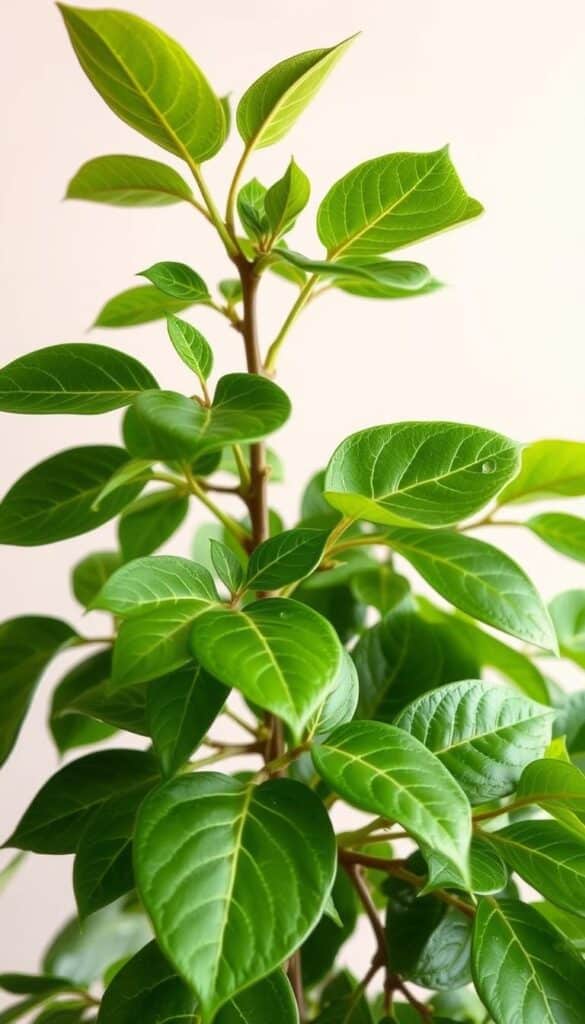I still remember the first time I brought home my Ficus Drupacea. It was a small, delicate tree with leaves that seemed to glow in the sunlight. I was immediately captivated by its unique beauty and eager to learn how to give it the best life possible. Over the years, I’ve discovered the ins and outs of nurturing this incredible plant, and I’m excited to share my journey with you.
Whether you’re a seasoned plant enthusiast or just starting out, this guide is here to help you unlock the full potential of your Ficus Drupacea. From understanding its watering needs to creating the perfect environment for growth, we’ll cover it all. I’ll share my personal tips and experiences, along with reliable advice, to ensure your plant thrives under your care.
One of the most fascinating things about the Ficus Drupacea is its ability to adapt. Native to tropical regions, this plant has evolved to survive in a variety of conditions. Its fig-like fruits and striking leaves make it a standout addition to any space. With proper attention to light, water, and humidity, you can enjoy the beauty of this tree for years to come.
By the end of this guide, you’ll have everything you need to know to become a Ficus Drupacea expert. Let’s dive in and explore how to give your plant the care it deserves!
Understanding Ficus Drupacea: Plant Basics and Features
My journey with Ficus Drupacea began with curiosity about its origins. This plant, native to tropical regions from Sri Lanka to Australia, thrives in rainforests and can grow up to 1000 meters above sea level. Its adaptability as both a tree and an epiphyte fascinated me, showcasing its resilience in various environments.
Exploring Its Natural Habitat and Characteristics
Ficus Drupacea is a perennial plant with leathery, elliptic to egg-shaped leaves. The prominent leaf veins and white sticky latex that appears when injured are distinct features. It grows as a tree and epiphyte, adapting to diverse conditions, making it a versatile species.
Identifying Leaves, Roots, and Fruit Details
The plant’s leaves are leathery and elliptic to egg-shaped, with notable veins. When injured, they release white sticky latex. Unique aerial roots add to its charm. The fig-like fruits are small, green, and grow near the branches. Fig wasps play a key role in pollination, making the process fascinating.
| Feature | Description | Comparison with Similar Species |
|---|---|---|
| Leaves | Leathery, elliptic to egg-shaped with prominent veins | Narrower and darker than Ficus benjamina |
| Roots | Develops aerial roots | More pronounced than Ficus lyrata |
| Fruit | Small, green figs near branches | Smaller than Ficus carica |
Understanding these features helps in providing the right environment for healthy growth. The plant prefers well-draining soil and partial shade to full sun, making it adaptable to various indoor and outdoor settings.
Essential ficus drupacea care guide: Watering, Pruning, and More
Keeping your Ficus Drupacea happy and healthy requires attention to a few key areas. Watering, pruning, and soil management are crucial for its growth and longevity. Let’s break down the best practices to help your plant thrive.
Watering Best Practices and Soil Requirements
Watering is one of the most critical aspects of Ficus Drupacea care. I’ve found that consistent moisture is key. Allow the top inch of soil to dry out between waterings to prevent waterlogging. The soil should be well-drained to keep the roots healthy and strong.
- Water thoroughly, ensuring the soil is moist but not soggy.
- Avoid getting water on the leaves to prevent fungal issues.
Using a potting mix designed for tropical plants works well, as it retains moisture without waterlogging.
Pruning Techniques for Healthy Growth
Pruning is essential for maintaining shape and promoting healthy growth. I recommend trimming leaves and branches to improve air circulation and remove dead or damaged leaves.
- Use clean, sharp tools to prevent spreading infections.
- Prune in the spring or summer when the tree is actively growing.
Be gentle when handling the figs and aerial roots to avoid disturbing the root system.

By following these steps, you’ll create an ideal environment for your Ficus Drupacea to flourish. Remember, balance is key to supporting robust growth and keeping your plant vibrant for years to come.
Creating the Optimal Environment for My Ficus Drupacea
Designing the perfect setting for my Ficus Drupacea involves careful consideration of light, temperature, humidity, and sun exposure. These elements work together to create an environment that mimics its natural habitat, ensuring the plant thrives.
Light and Temperature Preferences
The Ficus Drupacea loves bright light but can tolerate some shade. Direct sunlight for 4-6 hours daily is ideal, but it should be filtered to prevent leaf scorch. Temperature-wise, it prefers warmth between 65-75°F (18-24°C), avoiding cold drafts which can stress the plant.
| Light Requirement | Details | Comparison |
|---|---|---|
| Bright Light | 4-6 hours of direct or filtered light | Similar to Ficus lyrata needs |
| Temperature | 65-75°F (18-24°C) | Warmer than Ficus benjamina preference |
Humidity and Sunlight Tips for a Thriving Plant
Maintaining humidity around 50-70% is key. I use a humidifier or place the plant on a tray with water and pebbles. For sunlight, I ensure leaves don’t face direct sun to avoid burn, adjusting the setup seasonally for best growth.
DIY Maintenance Tips for a Lively Ficus Drupacea
Keeping my Ficus Drupacea in top shape involves a few simple yet effective DIY strategies. I’ve learned that regular monitoring and timely adjustments can make a big difference in the plant’s health and appearance.
Strategies to Monitor Growth and Mitigate Pests
Monitoring growth is the first step in maintaining a healthy plant. I check the leaves, stems, and roots regularly to ensure everything looks vibrant and strong. This helps me catch any potential issues early on.
- Inspect the leaves for any signs of discoloration or unusual spots.
- Check the soil moisture by gently digging a finger into the top inch of soil.
- Look for any pests like spider mites or mealybugs on the leaves or stems.
If I notice any pests, I use a mild insecticidal soap to gently clean the affected areas. It’s important to avoid harsh chemicals that might harm the plant. For severe infestations, I isolate the plant to prevent the pests from spreading to others.
Pruning is another essential part of DIY maintenance. I use clean, sharp tools to trim dead or damaged leaves and branches. This not only improves the plant’s appearance but also promotes healthy growth. I also make sure to fertilize occasionally during the growing season to provide the necessary nutrients.

Adjusting the environment is crucial, especially when it comes to light and humidity. I ensure the plant gets the right amount of sunlight and maintain a humid environment using a tray with water and pebbles. This helps keep the plant thriving without overwatering.
Troubleshooting common issues is part of the maintenance routine. If the leaves start to drop, it might be a sign of underwatering or low humidity. If new growth is slow, I consider adjusting the fertilization schedule or pruning to stimulate new development.
By following these DIY maintenance tips, I’ve been able to keep my Ficus Drupacea lively and healthy. Regular monitoring, proper care, and timely adjustments ensure the plant continues to flourish, bringing beauty and life to any room.
Wrapping Up My Ficus Drupacea Journey
As I reflect on my time with the Ficus Drupacea, I’m reminded of how much this plant has taught me about patience and the joy of nurturing life. From understanding its watering needs to creating the perfect balance of light and humidity, every step has been a rewarding learning experience.
The key to a thriving Ficus Drupacea lies in consistency and attention to detail. Ensuring the soil stays moist but not waterlogged, providing the right amount of sunlight, and maintaining a humid environment are the cornerstones of its care. These practices, along with regular pruning and monitoring, have helped my plant grow strong and vibrant.
I encourage you to embark on your own Ficus Drupacea journey. Experiment with the techniques shared here, and don’t hesitate to adapt them to your space. Whether it’s adjusting the light exposure or finding the perfect watering rhythm, every effort contributes to the well-being of your plant.
From the intricate care of its leaves to the careful placement in the sun, every moment spent tending to my Ficus Drupacea has been fulfilling. I hope you’ll find the same joy in nurturing this beautiful tree. Happy planting, and enjoy the journey of growing your own living beauty!
